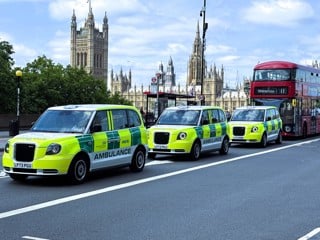Telematics covers a broad church of technologies which catalogue vehicle movements and performance.
For many companies, this starts with sat-nav or tracking technology but can extend to streaming data direct from the on-board diagnostics or the CAN-bus.
As telematics uses different functions to provide different sources of real-time, historical and management information, it is important to know precisely what you want it to do – and to choose a system which can be developed to add more functionality in the future.
Colin Marriot, general manager, fleet, at Centrica, says: “It’s very important that it’s specced properly.
"Rather than be sold a system that does ‘X’, think about what you are trying to achieve. Then make sure a provider demonstrates that its system can deliver the information you want.”
Marriot uses Trimble across Centrica’s 12,000 vans and 2,700 cars. He has seen an 8% reduction in fuel costs over 12 months.
“A primary benefit is better scheduling of engineering resource, workflow and routing. We reward good driver performance and train the poorer drivers, which gives less wear on vehicles, better fuel usage and a better safety record,” he says.
Marriot also believes worker engagement is essential. “We are big on safety and that was an important buy-in for staff. Involve the workforce in building a business case.
"However, we found that we couldn’t find a return on investment purely for safety and compliance, so we targeted workflow as well.”
North Yorkshire Police has seen lower insurance premiums since it installed Cybit Fleetstar trackers, as stolen cars can be recovered easily.
Telematics which monitors driver behaviour can also impress insurers, as well as proving driving events leading up to a collision.
Phil Clifford, fleet and technical manager at St Edmundsbury Borough Council, uses Quartix and says the tracking complements its routing software, allowing him to compare planned services with actual ones.
“There are obvious benefits and less obvious ones. We have seen better fuel economy but we also have it as proof of work done, we can disprove bogus claims, we use geo-fencing to see if vehicles are moving out of hours and we use it to monitor working time,” Clifford says.
He also stresses that the software must suit the fleet’s vehicles. Many councils have slow-moving vehicles for whom telematics may need to become more sensitive.
“You don’t save money by buying it. You save money by using it. You must use the information wisely to influence future decisions,” he says.
Quartix director Andy Kirk says some companies still put in the box and do nothing. They will, he adds, benefit from a small short-term gain as drivers react.
“But you have to manage the data for long-term benefits,” he says.
“The data needs to be presented in an easy-to-understand way and tuned to the fleet’s needs. The focus is on driver management and control.”
Giles Margerison, director of TomTom Business Solutions, UK and Ireland, says telematics offers duty of care, roadworthiness and driver behaviour benefits as well as protecting residual values.





















Login to comment
Comments
No comments have been made yet.